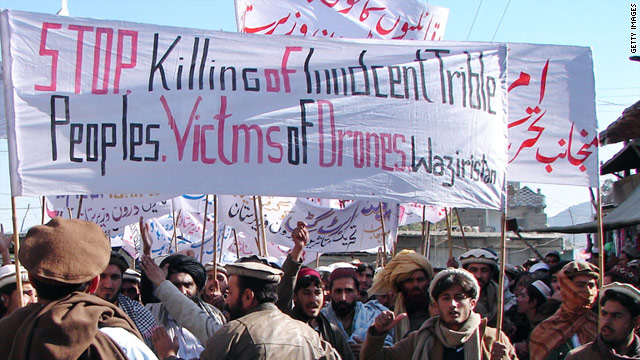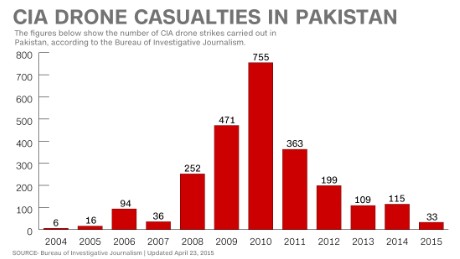
New Book Exposes the Horror of
the US’s Endless, Invisible Wars
Norman Solomon offers a powerful framework for
understanding geopolitical crises and
the enduring costs of militarism.
Jonathan Ng / Truthout
(July 22, 2023) — This June, the Swiss journalist Maurine Mercier found several United States citizens fighting in Ukraine under the guise of humanitarian work. “All of them are veterans, former soldiers who fought in all the recent American wars: the Gulf War, Iraq, Afghanistan,” she reports. Many suffer from post-traumatic stress disorder, carrying the embodied ghosts of past conflicts and deep psychic wounds to the latest geopolitical conflagration.
One veteran Mercier interviewed admits he’s addicted to combat, throwing himself into suicide missions on the front line. He’s already killed 13 people in Ukraine. Proximity to death allows him to feel alive, the shock of adrenaline taking him to “this beautiful hidden space,” where “the colors are brighter” and sounds are “different, vibrant.” Back home, he lacks a sense of belonging. But in Ukraine, “there’s something.”
At a fundamental level, these rudderless warriors are a symbol of a society addicted to warfare. They reflect the tensions that author and antiwar activist Norman Solomon unwinds in his brilliant new book, War Made Invisible, which examines the profound causes and costs of US interventionism. Solomon offers a powerful framework for understanding geopolitical crises, as well as the unseen yet enduring costs of militarism.
As the war on Ukraine lurches on, Solomon highlights three underlying facets of US power that are especially useful for interpreting our current moment: an embedded intelligentsia, an economy that exports violence and the infrastructure of a global empire.

Mobilizing Minds
Solomon’s book unveils the disturbing proximity between the ruling class and corporate media since the Vietnam War, revealing how the fourth estate sustains the assumptions that make intervention possible in Ukraine and elsewhere. “The essence of propaganda is repetition,” he argues. “The frequencies of certain assumptions blend into a kind of white noise,” conditioning US people to support military operations they never see or truly understand.
This was never clearer than during the 2003 invasion of Iraq. Officials in the US-led military coalition privately worried that journalists would realize they had “no ‘killer fact’” that “‘proves’ Saddam [Hussein] must be taken on.” Nonetheless, The New York Times echoed false claims that Iraq possessed nuclear weapons and actively cheered the war effort. Its columnist, Thomas Friedman, even advocated sending soldiers “house to house from Basra to Baghdad,” in a naked exhibition of military might, while telling Iraqis to “suck on this.”
Indeed, across the media landscape, embedded intellectuals mobilized their pens to solidify public support for war. ABC, NBC, CBS and PBS all skewed their coverage: In the two weeks before the invasion, the networks aired only one US guest out of 267 who questioned the war. MSNBC even scrapped Phil Donahue’s show after the prominent anchor questioned the Bush administration’s motives for intervention.
Instead of encouraging sustained reflection, corporate media reduced the war to bloodless spectacles of national power and technological achievement. Solomon notes that the Pentagon “embedded” around 750 journalists, integrating them directly into the architecture of the war effort.
After promoting the invasion of Iraq, many of the same voices now propound further North Atlantic Treaty Organization (NATO) intervention in the war on Ukraine. The New York Times calls “America’s support for Ukraine” a “test of its place in the world in the 21st century.” Most media outlets seem oblivious to the similarities between the two wars of aggression. Yet the parallels remain inescapable: In May, former President George W. Bush mistakenly denounced Russian President Vladimir Putinfor his “wholly unjustified and brutal invasion of Iraq,” before clarifying that he meant Ukraine.
By echoing state officials, the corporate media lend government propaganda the appearance of private conviction and objective truth. “Overall, America has been conditioned to accept ongoing wars without ever really knowing what they’re doing to people we’ll never see,” Solomon concludes.
In particular, press coverage of the war on Ukraine projects the illusion of consensus, even as public support for NATO’s military buildup declines. By erasing dissent, media conglomerates hide the grisly costs of war and the imperial system that wages it — profiting from conflict by selling narratives that render it invisible.

Commodified Misery
In many ways, militarism is a form of class warfare. “The fat profit margins from supplying the Pentagon and kindred agencies,” Solomon explains, exacerbate economic inequality while redirecting resources away from social programs. In effect, war is perpetual because it is profitable, enriching an elite firmly entrenched in the military-industrial complex.
Confirming Solomon’s thesis, the Department of Defense published a landmark study of military contractors this April that registered “outstanding market returns,” including an increase in operating margins (profit as a percentage of revenue) from 7-9 to 11-13 percent over the past two decades. Arms makers outperformed commercial peers because of government contracts that guarantee profits and cash flow.
Despite a jump in dividends and share buybacks from 3.7 to 6.4 percent, the industry actually decreased investment in business operations. Firms declined to plow back earnings into research or capital stock, instead funneling revenue to shareholders. Auditors compared the massive transfer of resources to investors to eating “the seed corn” — “damaging future prospects by overconsuming critical resources for the short term benefits they offer.”
Beyond guzzling government revenue, investigators also complain that companies engage in blatant war profiteering. Former Director of Defense Pricing Shay Assad reports that the price “gouging that takes place is unconscionable” and widespread. Lockheed Martin and Boeing notoriously overcharged the government for the PAC-3 missile, reaping 40 percent profits rather than the legal 10-12 percent, according to a “60 Minutes” report. During the Iraq War, TransDigm Group even refused to supply critical valves for Apache helicopters before boosting prices 40 percent — a practice that auditors call “extortion.”
The concentration of industry power in the hands of defense conglomerates and the war on Ukraine encourage price gouging. “For many of these weapons that are being sent over to Ukraine right now, there’s only one supplier,” former Director of Defense Pricing Assad told “60 Minutes.” “And the companies know it.”
Meanwhile, military contractors are using Ukraine and other strategic markets as testing grounds for arms systems. Maj. Gen. Robin Fontes and Jorrit Kamminga — who run the weapons consulting firm RAIN — argue in National Defense magazine that “Ukraine is a laboratory” for the future of warfare: “a center-stage, relentless and unprecedented effort to fine-tune, adapt and improve [artificial intelligence]-enabled… systems.” Mobilizing AI software, companies such as Planet Labs and BlackSky Technology provide intelligence to soldiers in real time, functioning as US extensions of the Ukrainian war effort while creating a fluid and information-rich fighting environment.
This month, the Biden administration even approved cluster bombs for Ukraine, after previously suggesting their use constituted a “war crime.” Ukrainian and Russian forces already wield them in combat, violating an international convention that bans the indiscriminate explosives. In past conflicts, investigators alleged that Western firms manufacture them in playful shapes to attract and maim civilians — including children.
Yet for arms makers, the Middle East remains the quintessential weapons laboratory. Israel was the first foreign country to receive the F-35 Lightning, and its orders funded the fighter plane’s development. In 2014, Israeli forces leveled entire swathes of Palestine with the jets while helping Lockheed Martin hone their design. During the offensive, the US restocked Israel’s ammunition immediately after it bombed an elementary school, enabling its forces to exceed Hamas’s firepower by a ratio of 440 to 1.
Shortly before their May 2023 raids, Israeli pilots conducted a “large-scale exercise” in the F-35s with their US peers at Nellis Air Force Base in Nevada. “It is a rare opportunity for warfighters from both countries to integrate our most advanced capabilities,” exclaimed Col. Jared Hutchinson, the US commander overseeing the initiative.
Afterward, Israel pounded Gaza with US ordnance, including a Boeing GBU-39 bomb that gutted an apartment building — killing several civilians, including a young woman preparing for her wedding. The military campaign damaged 2,943 housing units, employing “disproportionate” airstrikes that Amnesty International deemed war crimes.
Rather than undermining relations, US and Israeli arms makers turned crimes into publicity arguments. Only one month later, Israeli Defense Minister Yoav Gallant, Elbit Systems and Israel Aerospace Industries attended the Paris Air Show to clinch new sales, boasting that their weapons were “combat proven.” Tellingly, Haaretz calls the occupied territories “a classroom” for the military “to test its equipment,” which US aid heavily subsidizes.
The money continues to flow. Solomon relays that arms makers spent $2.5 billion in lobbying over the past two decades, funding the campaigns of key legislators such as House Armed Services Committee Chairman Adam Smith.
By globalizing the military-industrial complex, the ruling class has made war at once permanent yet distant, sustaining the US empire’s formidable war-making capacity with foreign conflicts. Allies like Ukraine and Israel become markets and sales pitches for battle-tested equipment. Geopolitical upheaval underwrites the prosperity of conglomerates while devouring resources for social programs and the poor.

All-Volunteer Imperialism
Finally, the ruling class makes war invisible by using anonymous recruits and private contractors to maintain the diffuse infrastructure of a global empire. In the 1970s, the military transitioned to an “all-volunteer force,” to sap energy from the antiwar movement and insulate the armed forces from scrutiny. “Army recruiting learned how to sell military service alongside soap and soft drinks in the consumer marketplace,” historian Beth Bailey observes.
Solomon emphasizes that recruiters have preyed on the vulnerable, promising that “enlisting means opening doors to better opportunities.” By introducing economic incentives and eliminating the draft, officials created a warrior class isolated from the general public. The Pentagon now mobilizes it for wars that most of the US public will never witness, preemptively minimizing political backlash.
As economic inequality increases, an analyst from the Brookings Institution underscores that the military is “one of the last bastions of middle class social mobility,” attracting recruits with health care and free college tuition. Yet the Army faces chronic personnel shortages, encouraging officials to target children as young as 12 as well as marginalized groups including Indigenous communities in Canada. In recent years, the military has sought recruits by offering citizenship to foreign nationals, enhancing its presence on social media and even advertising fake Xbox giveaways to lure youth to its website.
Solomon also points out that such personnel oversee an intricate network of around 750 bases worldwide, allowing the armed forces to flex their muscles across every continent. Beyond facilitating largescale mobilizations, foreign military installations make covert operations and even political intrigue possible.
Repeatedly, bases in Latin America have facilitated coups against left-wing governments. After Ecuadorian President Rafael Correa closed an installation at Manta, his successor leveled spurious legal charges against him while welcoming US forces back to the country. In 2018, the Ecuadorian Defense Ministry even announced plans to allow the US military to use the Galápagos Islands for operations, calling the archipelago a “natural aircraft carrier.”
Foreign bases also allow the US to secure control over strategic resources. Nowhere is this truer than mineral-rich Peru, where last December US officials supported the ouster of President Pedro Castillo, a populist promoting economic sovereignty. His rival Dina Boluarte initiated a wave of repression that has killed more than 60 civilians, culminating in what the president of the Inter-American Commission on Human Rights calls “a massacre” against the Indigenous population in Ayacucho.
Recently, Boluarte authorized the entrance of 1,242 US soldiers, sending a chilling signal to protesters. Citing regime change in Peru, a US-trained colonel in Colombia also announced plans this May to “defenestrate” his country’s leftist president.
In Africa and the Middle East, bases function as force-multiplying weapons platforms for drone strikes. Since 2007, the US air war in Somalia against al-Shabab has killed at least 90 civilians, yet the Pentagon only recognizes five of the victims and refuses to compensate their families.
Despite claims of pinpoint accuracy, the indiscriminate precision of drone warfare escalates regional conflicts. In 2017, the US mistakenly helped Nigerian officials bombard a refugee camp the government itself constructed, killing more than 160 civilians. Drones have even bombed weddings in Yemen and Afghanistan. More recently, a US drone enabled France to kill “members of armed terrorist groups” in Bounti, Mali. Later, United Nations forces discovered the victims were members of another wedding party.
US policy makers invariably portray “over-the-horizon” capabilities such as bases and drones as a security imperative. Yet, as Solomon argues, they actually foster insecurity, alienating communities across the globe and fueling a violent feedback loop.
These consequences are not only invisible but enduring. This spring, Brown University published a study estimating that post-9/11 conflicts have killed more than 4.5 million people. Under US sanctions, the article notes, most Afghans suffer from malnutrition and are dying from war-related causes at higher rates than ever.
As US veterans from the war in Afghanistan fight in Ukraine, the specter of past conflicts haunts the present. It leaves us with what Solomon calls deep scars and “tragic absences”: poisoned minds and shattered bodies, starving populations and land sown with ordnance. From Afghanistan to Ukraine, the same arguments, arms and soldiers are reaping the same results. Over two decades after invading the Middle East, the US still advertises peace along a circular road to war.
Copyright © Truthout. Reprinted with permission.
Jonathan Ng received his Ph.D. in US history at Northwestern University, specializing in the history of US foreign relations. Currently, he is a postdoctoral fellow at the Center for Presidential History at Southern Methodist University.